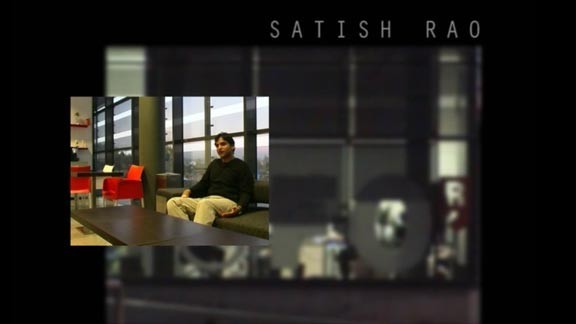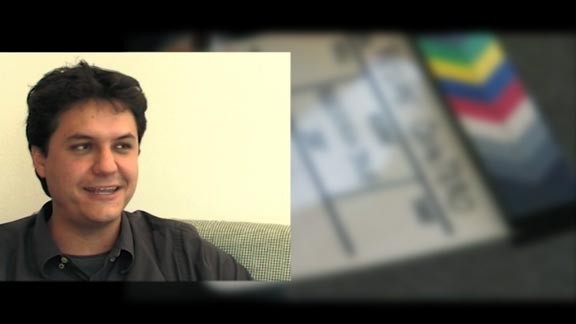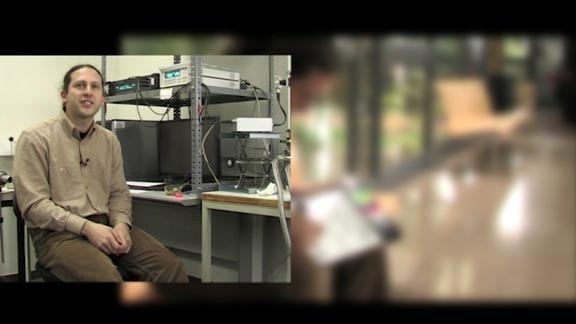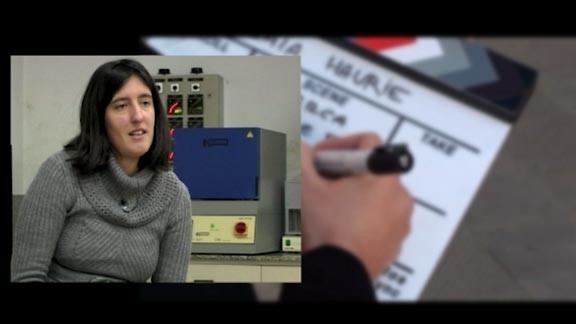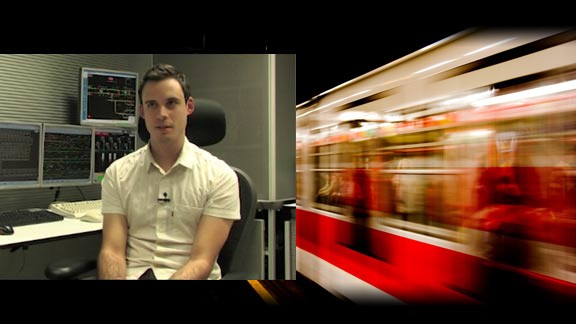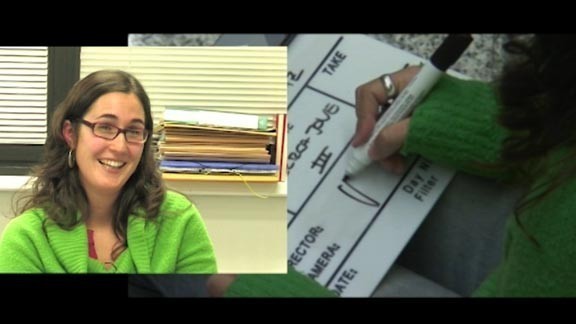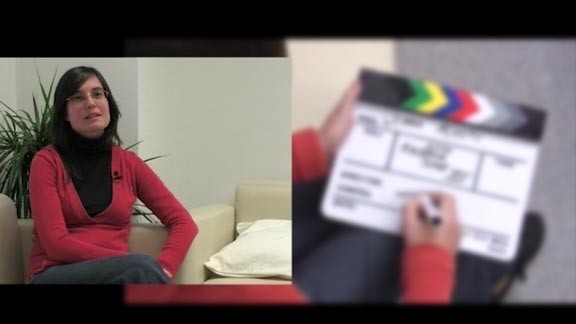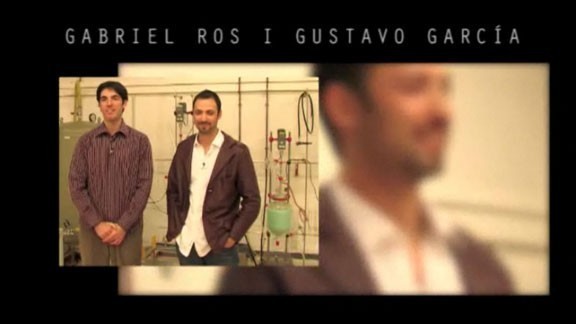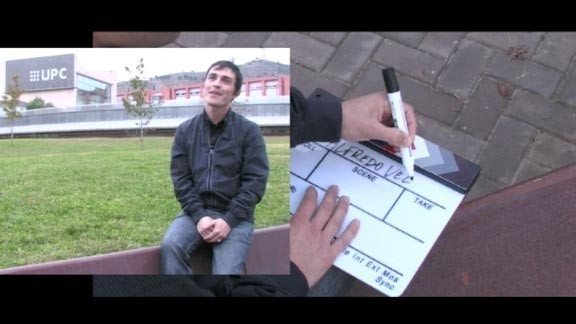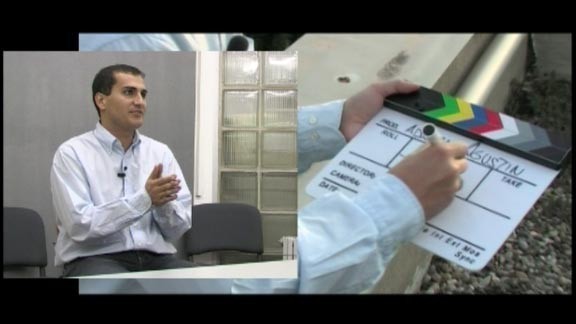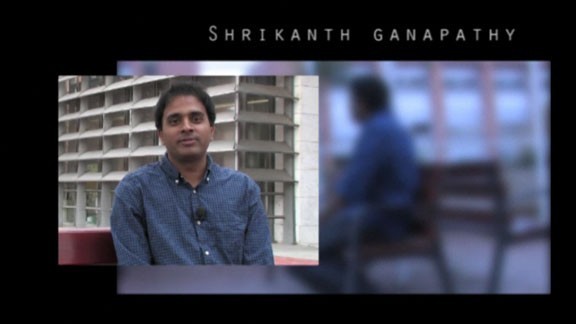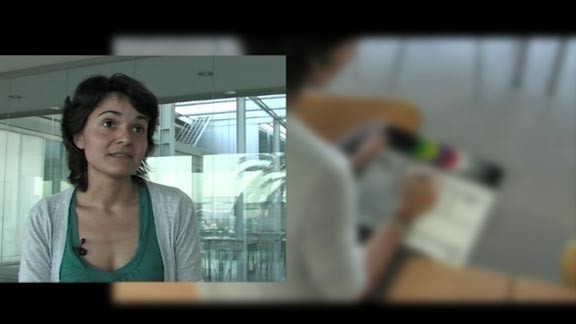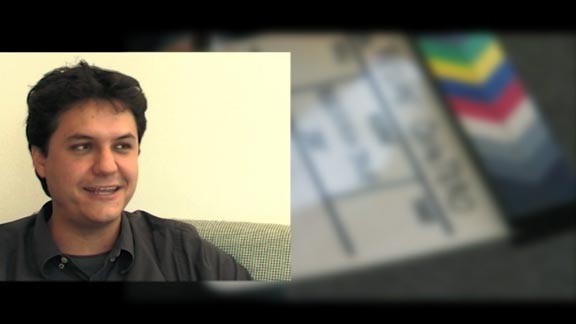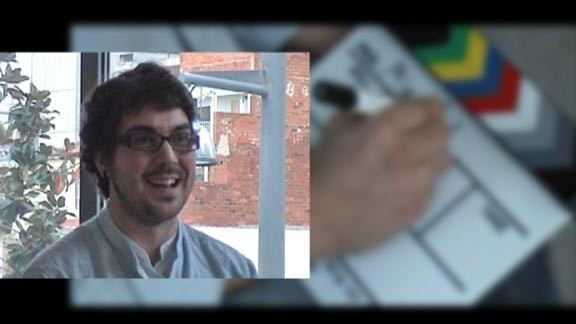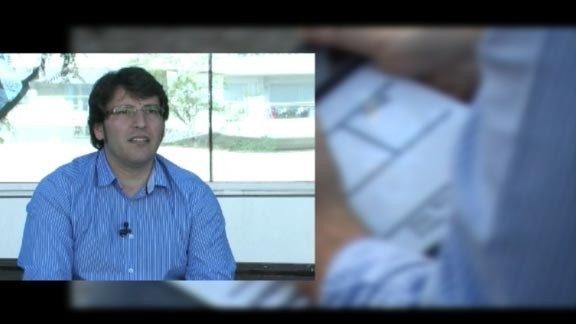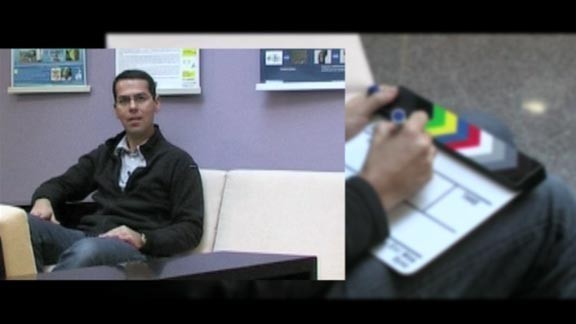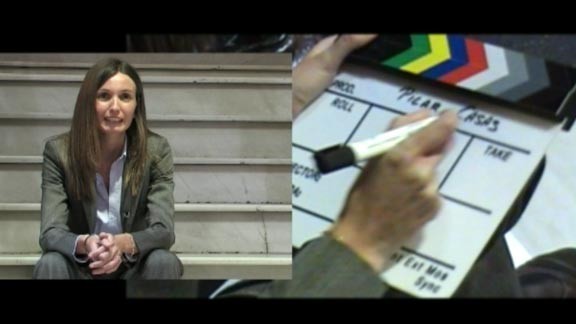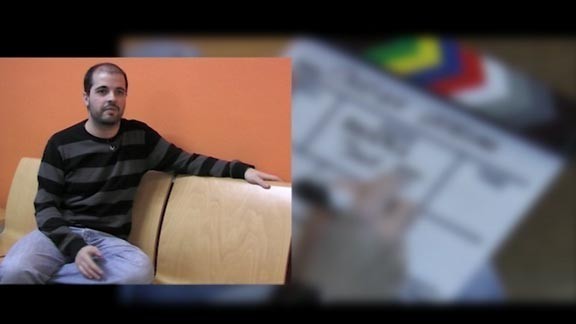Gemma Agustí is fond of something Jules Verne once said: science is made up of a series of mistakes that lead little by little to the truth. ‘It’s true! A bad result shouldn’t discourage you or make you lose hope.’ She insists, ‘Research is addictive. Every time you obtain a positive result, you want to do it some more!’
Agustí’s research focuses on pathogenic microorganisms found in wet environments such as swimming pools and accumulated rainwater that cause spontaneous abortions, or miscarriages. She received a start-up grant from the UPC and is currently studying these pathogens and identifying sources of infection.
The bacterium Waddlia chondrophila is believed to cause abortions in bovines and has, in recent years, been directly linked to spontaneous abortions in women in the first trimester of pregnancy. The ecology, route of infection and prevalence in the environment of this pathogen are all unknown and, thus, so is the route of transmission.
Vídeos de la mateixa sèrie
The laser, detective of cancerogenic cells?
Postdoctoral researcher
30 years-old; Washington, D.C, USA
Currículum
Postdoctoral Researcher. Institut of Photonic Sciences. Castelldefels.
PhD – Physics: University of Illinois at Urbana-Champaign, USA.
MSc – Electrical and Computer Engineering: University of Illinois at Urbana-Champaign, USA.
Outsanding
The best of dedicating oneself to the research is that every day one has the chance to produce something new. One’s ideas and hard work can produce something innovative and unique and can improve technologies. This is exciting for working as a researcher.
In Spain, there is a lot of money that is being spent on research. So there are many opportunities for youngsters to become involved in research in this country. It is not as necessary as before for talented researchers to leave Spain to have good careers. Second, a talented researcher is respected all across the world and will have the opportunity to do many things as technology continues to advance.
I hope that I will some day become a professor at a university in the United States or in Europe. This is very difficult, but I do imagine myself working in research for a long time either at a university/institute or for a company.
Algorithms to forecast natural disasters?
This young researcher is doing his PhD at the Centre for Applied Research in Hydrometeorology (CRAHI) within the framework of the IMPRINTS project, which is funded under the EU’s 7th Framework Programme and coordinated by UPC lecturer Daniel Sempere.
The IMPRINTS project seeks a better understanding of the phenomena that cause flash floods and debris-flow events, in order to improve risk management and develop forecasting and warning systems that increase public safety in situations involving flood risk. Nineteen public and private institutions from Spain, Switzerland, the United Kingdom, France, Italy, Holland, South Africa and Canada are participating in the project.
Liquids and solids at the same time?
At first glance, the molecules in a liquid like water seem to be completely disordered. However, upon closer examination, one finds that the space around each one is filled with other molecules, like pieces in a three-dimensional game of Tetris. Thus, order is found in a system that initially seemed to be disordered. This fact is crucial to understanding how certain biological processes involving water work.
This is the line of research being pursued by this young researcher, who is experimenting with neutrons to study the structure of liquids. Luis Carlos is a firm believer in popularising science and would like to see scientific news in the media given greater attention, since, as he puts it, ‘research is also culture’.
How do materials react to fire?
She works on research projects related to the development of new construction materials with specific features, the use of non-destructive diagnostic techniques, the assessment of energy efficiency and acoustic comfort conditions, how materials react to fire, and the computer simulation and design of elements intended to make buildings safer and more sustainable.
An underground that never breaks down?
The final project for his degree consisted in designing artificial intelligence hardware and software able to predict mechanical and electrical motor failures. With a view to pursuing the project further, his group began to collaborate with the company Transports Metropolitans de Barcelona (TMB), which has been key to allowing them to get the business project off the ground.
The group entered their business idea in the 9th Contest of Business Ideas sponsored by the UPC’s Innova Programme, and it took second prize. Thus was born Thinking Forward S.L., which has created a new hardware and software system to detect potential electrical motor failures. The system’s clearest application can be found in the railroad sector, where it would increase safety and considerably reduce both predictive and corrective maintenance work, and also enhance the reliability of systems that use electrical motors.
Noiseless, vibration-free buildings?
Díaz researches the parameters and structures involved in noise propagation without forming part of a specific project. This gives her the freedom to follow her own interests, which has led to a rich and varied experience that is anything but routine. Specifically, her line of research is the numerical modelling of vibroacoustic problems (i.e. problems involving vibrations and sound) in the spheres of construction and civil engineering.
Bacteria that can cause miscarriages?
Agustí’s research focuses on pathogenic microorganisms found in wet environments such as swimming pools and accumulated rainwater that cause spontaneous abortions, or miscarriages. She received a start-up grant from the UPC and is currently studying these pathogens and identifying sources of infection.
The bacterium Waddlia chondrophila is believed to cause abortions in bovines and has, in recent years, been directly linked to spontaneous abortions in women in the first trimester of pregnancy. The ecology, route of infection and prevalence in the environment of this pathogen are all unknown and, thus, so is the route of transmission.
Waterpoof and fireproof cardboard?
The research team has created a new material made out of paper and cardboard waste that is mouldable, fireproof, porous, waterproof and highly resistant and can be used as a substitute for plastic and other materials commonly used in the construction sector.
The new material, which they have named Biprocel, is obtained by applying a biotechnological process to cellulose waste, is environmentally friendly and can be obtained without the use of chemicals. It has applications in a variety of sectors, ranging from construction to shipping or packaging. In fact, because of its high resistance, insulating and waterproofing properties and low density, Biprocel can be used as a replacement for plasterboard and other materials used in construction, such as insulating partition walls, soundproofing panels and drop-ceiling tiles, or for polyester tissue in packaging.
A virtual assistant to fight tumours?
Vellido leads a team of 14 researchers on an international scientific project to design an intelligent diagnostic decision-support system for brain tumours based on advanced imaging techniques and soft computing, i.e. computer systems that are able to process imprecise, uncertain and/or incomplete information adequately to achieve usability, robustness and low-cost solutions.
The project, called Artificial Intelligence Decision Tools for Tumour Diagnosis (AIDTumour), aims to create a functional prototype that can help doctors improve their diagnoses in clinical oncology, specifically with regard to brain tumours, using data from magnetic resonance spectrometry.
Will mobile coverage problems soon become a thing of the past?
Within the framework of the project, a variety of solutions have been proposed, including introducing relays and designing the necessary techniques to use them to improve communications, increasing bandwidth to make it possible to transmit more information, and trying to ensure that, at the cellular level, all users have very good coverage for Internet transmissions and data transfer.
The radio spectrum has been observed to be underused in certain places and at certain times of day. In such cases, the researchers are investigating the option of using both mobile terminals and base stations to detect whether the idle bandwidth can be used to increase the speed of data transmission. The project likewise proposes deploying very small and affordable relay terminals and significantly increasing the performance of wireless networks.
At the frontier of Moore’s Law?
Holder of a degree in electronics and communications from Anna University (India), he is a researcher with the Architectures and Compilers (ARCO) Group and is writing his PhD within the framework of the Terascale Reliable Adaptive Memory Systems (TRAMS) research project, which aims to ensure that the memories of the teraflop-capable nanometric processors of the future are robust, reliable, energy efficient, fault tolerant and equipped with a variety of advanced features.
As a result of the constant shrinking of transistors and ensuing improvements in their performance, in accordance with Moore’s Law (named after Gordon Moore, founder of Intel Corporation), within the next decade a single chip should be able to perform trillions of operations per second, thereby enabling data flows of several trillion bytes per second. Such impressive computing capacities will not only transform the processing flows at major data and computer-service centres, but also the power consumption and functional capacity of personal computers, communication devices and all other electronic devices with entertainment and home applications.
Satellites to study climate change?
On 2 November 2009, the European Space Agency launched the Soil Moisture and Ocean Salinity (SMOS) satellite. The group led by researcher Adriano Camps, from the UPC’s Department of Signal Theory and Communications, participated in the mission, which was the first to be led by Spain and will enable more precise forecasts regarding climate change. Monerris defended her doctoral thesis within the framework of the activities leading up to the satellite launching. She is currently the director of the SMOS Barcelona Expert Centre (SMOS-BEC).
Algorithms to forecast natural disasters?
This young researcher is doing his PhD at the Centre for Applied Research in Hydrometeorology (CRAHI) within the framework of the IMPRINTS project, which is funded under the EU’s 7th Framework Programme and coordinated by UPC lecturer Daniel Sempere.
The IMPRINTS project seeks a better understanding of the phenomena that cause flash floods and debris-flow events, in order to improve risk management and develop forecasting and warning systems that increase public safety in situations involving flood risk. Nineteen public and private institutions from Spain, Switzerland, the United Kingdom, France, Italy, Holland, South Africa and Canada are participating in the project.
Electric airplanes?
He first began to work on the EU’s MOET project as a result of a collaboration grant he received when he was still a student. The project, led by the company Airbus, seeks to improve the internal architecture of airplanes in order to make them lighter, safer, more fuel-efficient and less polluting.
Within the framework of the project, which is overseen by researchers Juan Antonio Ortega and José Luis Romeral, the UPC is responsible for diagnosing how the motor that moves an airplane’s ailerons works. The new version of this motor, which has traditionally been based on a hydraulic system, will use an electromechanical system instead.
Semi-solid casting of metal parts?
He is currently working on his doctoral thesis in the field of alloy casting by means of the sub-liquidus casting process and is a lecturer at the Vilanova i la Geltrú School of Engineering.
Simulations to predict phenomena on a nanometric scale?
Marino Arroyo has received a prestigious Starting Grant for nearly €1.5 million to pursue his work in the field of multiscale modelling and computer simulation. Starting Grants are a highly competitive grant programme that aims to launch the careers of the most promising researchers. He has also been recognised by the ICREA Acadèmia programme, which rewards excellence in research and leadership with €250,000 grants intended to allow recipients to devote themselves primarily to research for a period of five years.
Recyclable tyres?
Pilar Casas is adamant that ‘without research, there is no innovation, and without innovation, companies aren’t competitive. We need new ideas, new products that position Catalonia at the forefront of scientific research.’ For Casas, research has an addictive side. ‘The best part about being a researcher is that the more progress you make, the more curious you become—you get hooked!’
Hydrogen-producing plants?
His doctoral thesis consists in studying a chemical reaction that uses a biomass-derived product called bioether to obtain hydrogen. Studying this reaction involves preparing and characterising catalysts containing different formulations of nanoparticles.
He is currently conducting experiments for his doctoral thesis, and he will shortly begin a research stay at the Norwegian University of Science and Technology (NTNU). He plans to defend his thesis next autumn. Once he has finished his PhD, he would like to continue to devote himself to research in the private sector.


